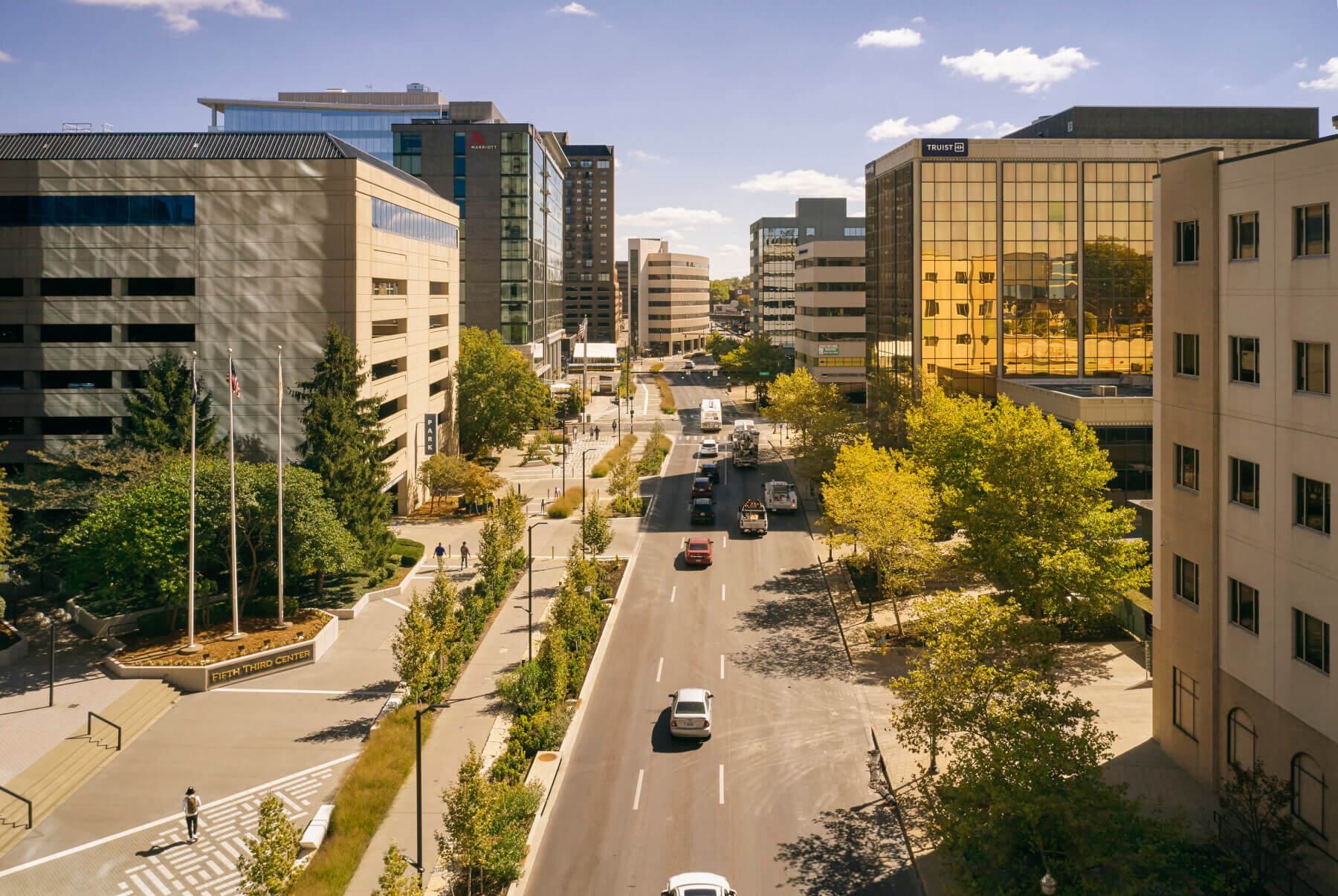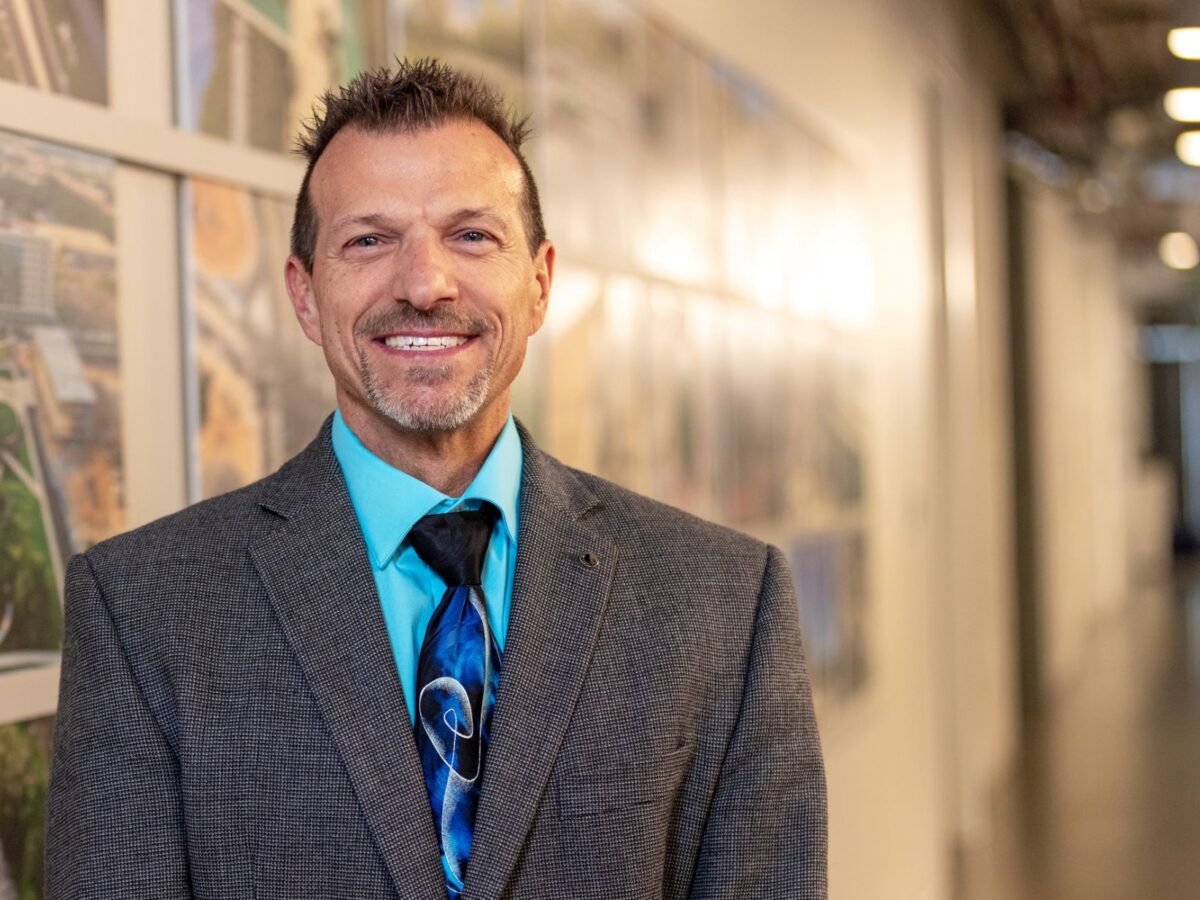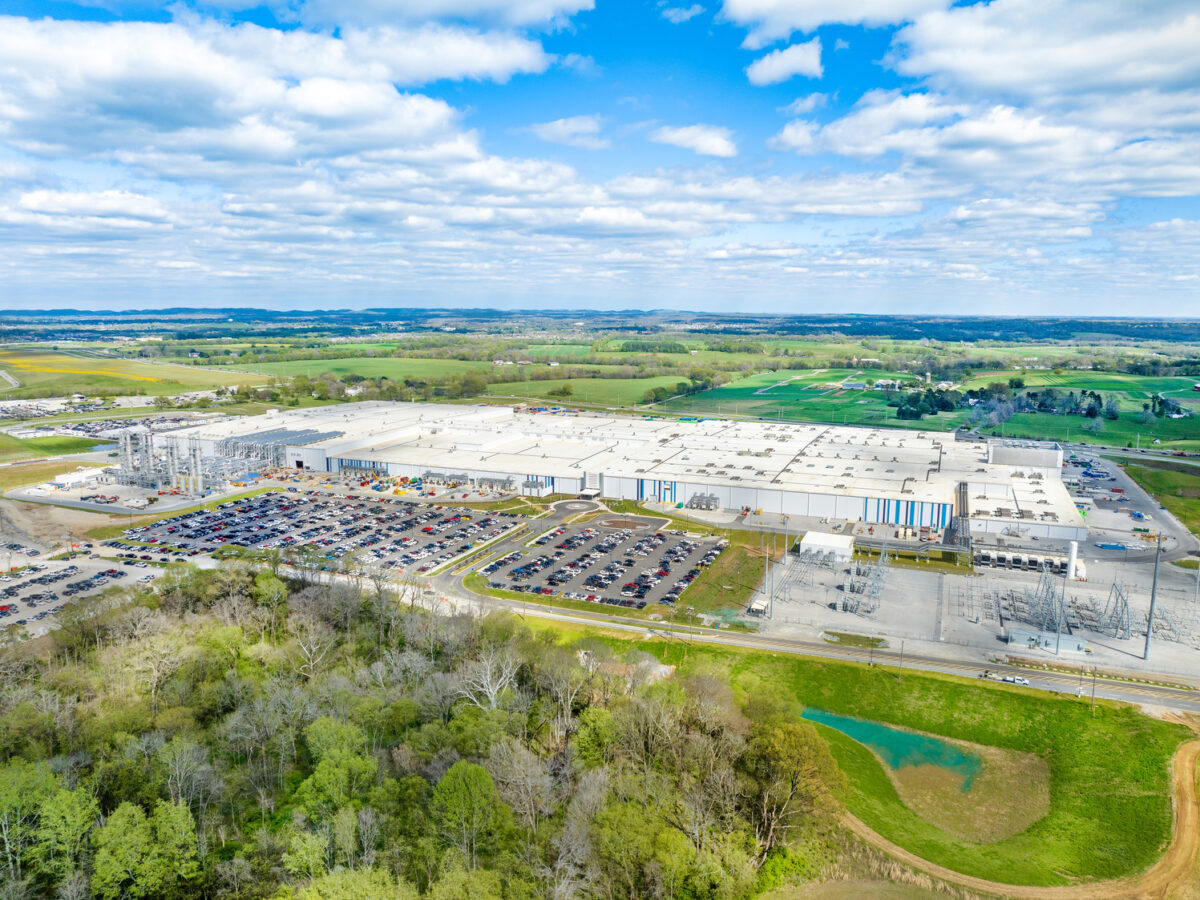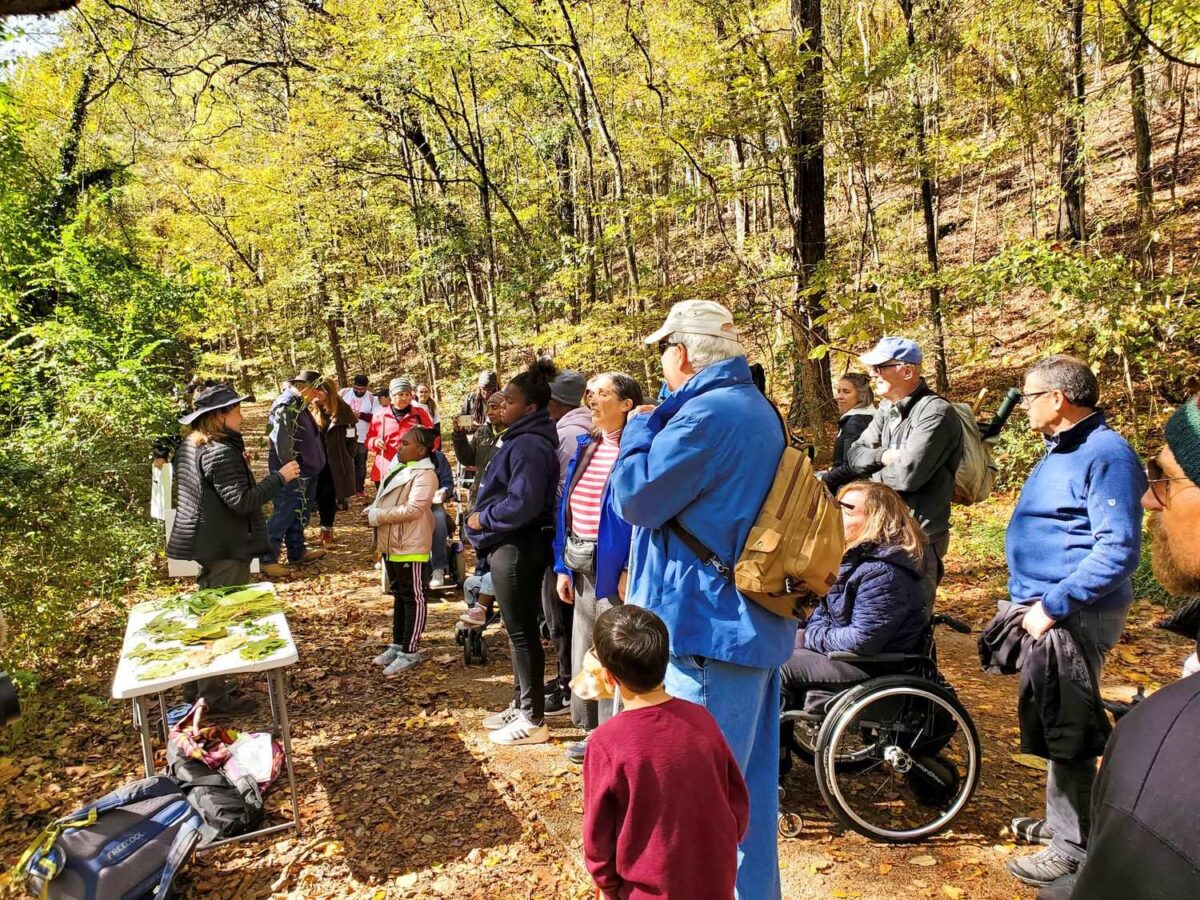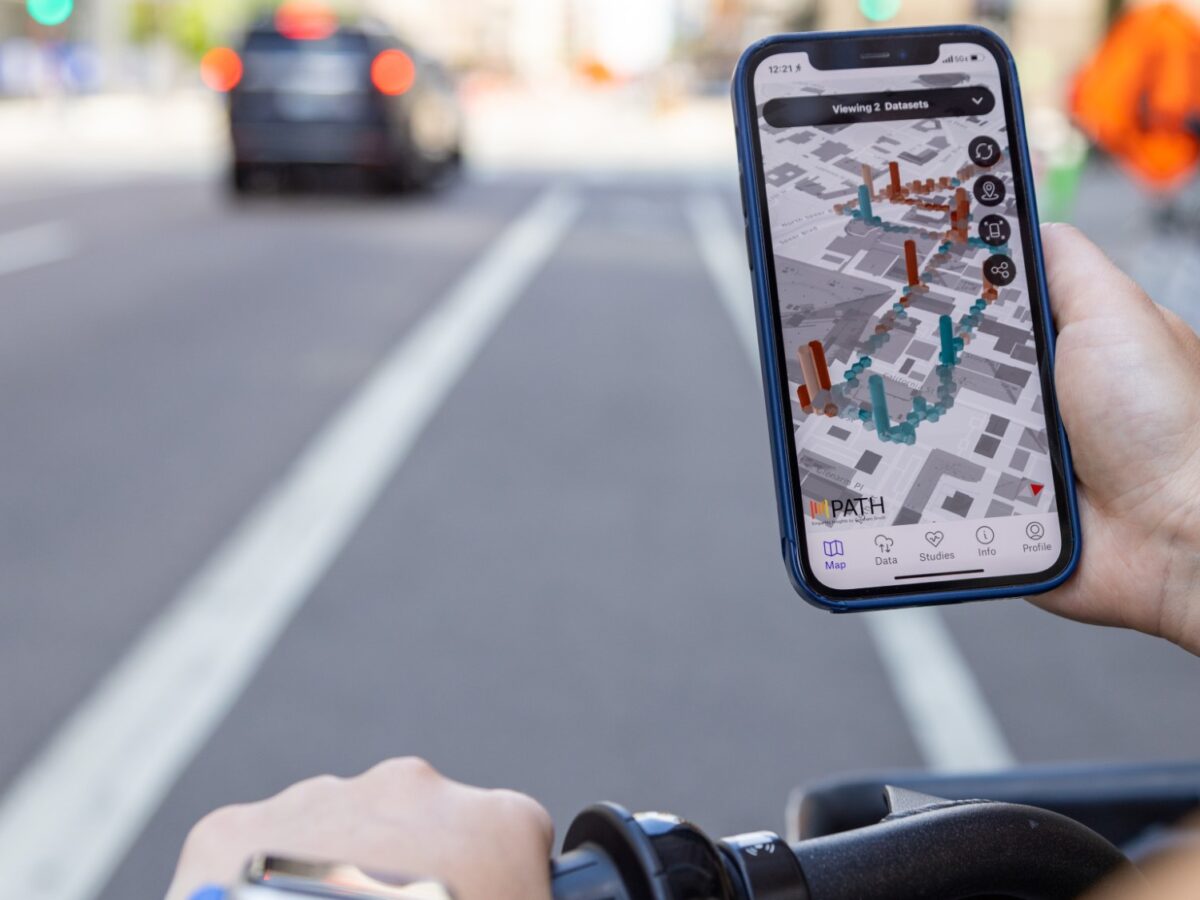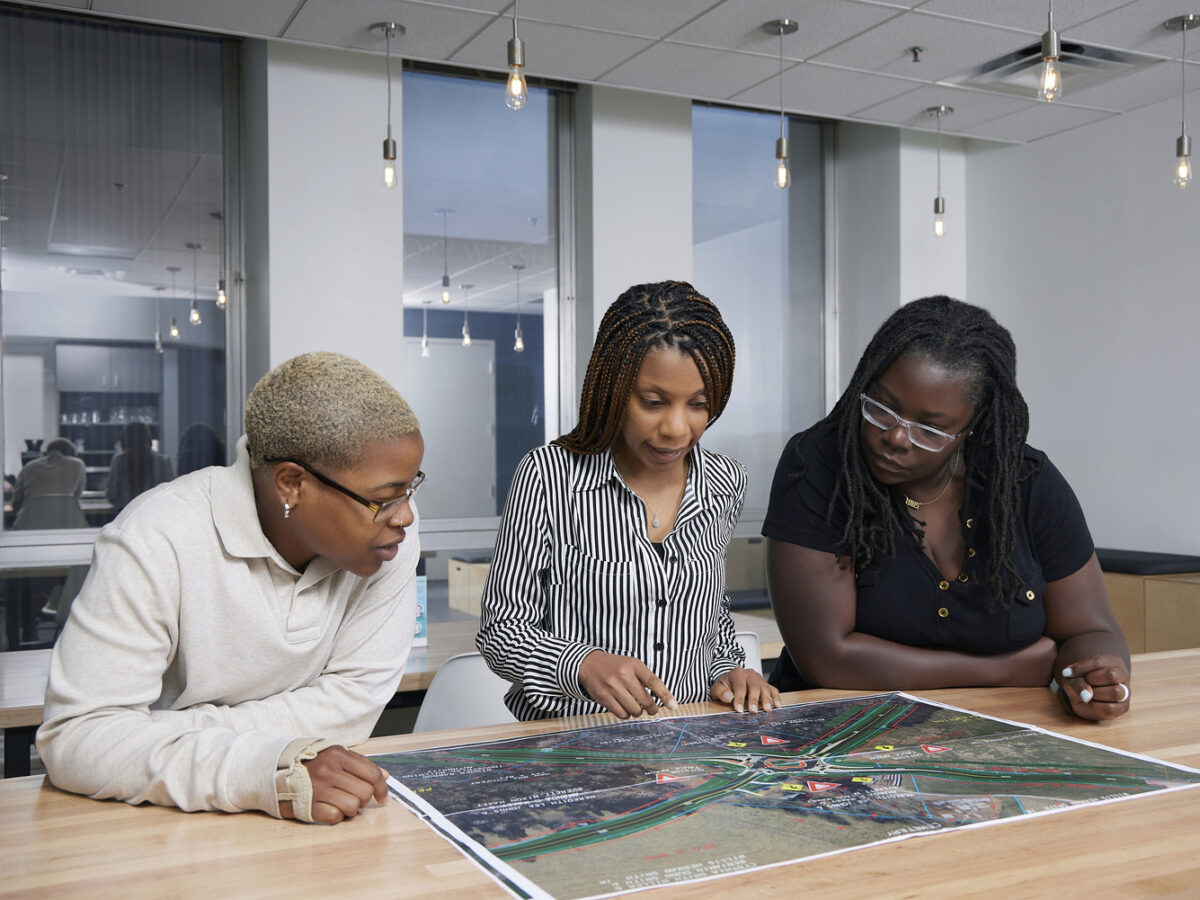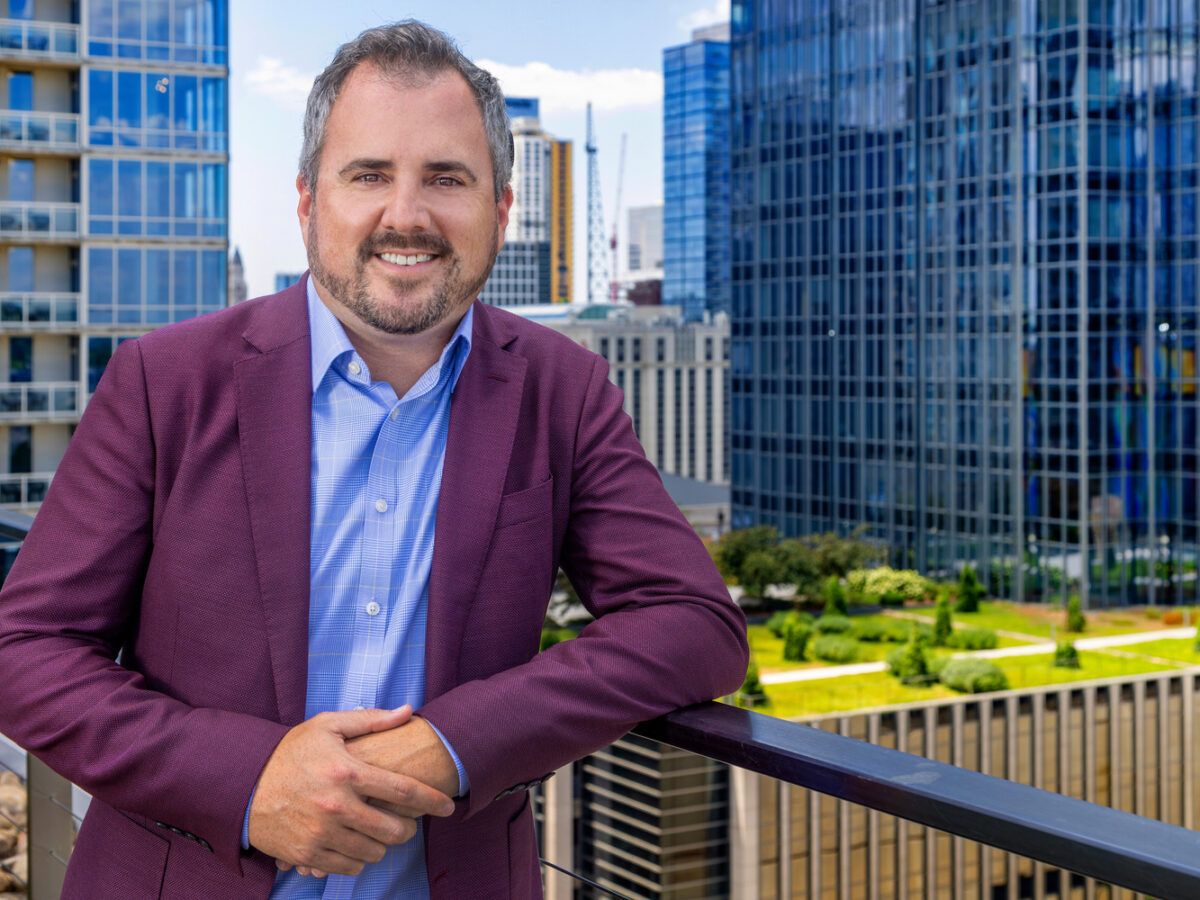Ah, the convenience of a “15-minute city.” In imagining what cities might look like in the future, the concept suggests that neighborhoods can fulfill all of our basic needs within a 15-minute walk, bike or short car ride. But where does transportation infrastructure fit into this concept? I recently discussed that question with my Gresham Smith colleague Matt D’Angelo, the TSM&O practice leader for our Transportation market. Here is some food for thought from our conversation.
Andy Lucyshyn: What new transportation challenges would be introduced in a 15-minute city and how can we as engineers approach those challenges?
Matt D’Angelo: I think from our standpoint as engineers, whether it’s in a classic context of how we’ve looked at providing mobility so far, or in looking at new options for how cities may reinvent parts of their infrastructure, we’re in the business of providing safe mobility solutions and responding with creativity and ingenuity to meet our clients’ objectives. So, at the end of the day, it’s all about how we provision mobility.
We can think about provisioning mobility around different needs in this context. Firstly, even if the residents of a 15-minute city have the goal of being able to reach critical services within a 15-minute journey, you’re still going to have to get fresh goods and deliveries to the citizens and businesses that operate within that 15-minute sphere. Therefore, how you provision goods and freight in and out of a 15-minute city must be considered within the transportation ecosystem. It’s a really important factor and a potential challenge that needs to be thoroughly thought through.
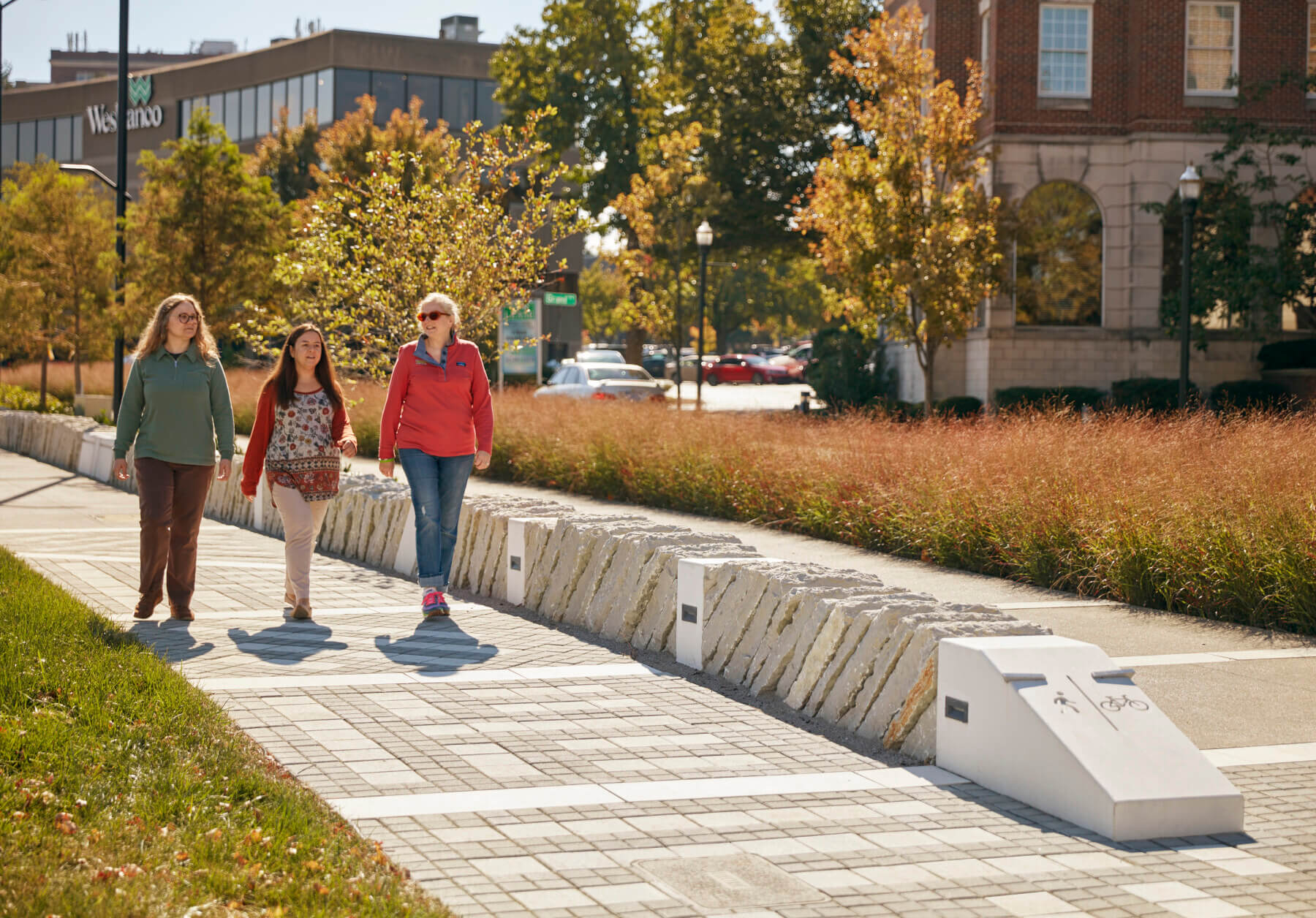
Andy: Also from the perspective of mobility within that 15-minute city, a great deal of the transportation decisions would be dependent on how much vehicular traffic was intended to be on-site as well as the nature of the multimodal options on that site—both transit and micro-transit types of alternatives. For example, if a fleet of shared vehicles was assigned for the community, you’d have to allow for storage of those vehicles.
There would also be a need for curbside management, a place to pick up and drop off residents, and people to exchange those vehicles. So, how we’d support the residents of a 15-minute city with transportation infrastructure really boils down to what they want to achieve as a community.
Matt: Agreed. And in looking at the personal transport component, that could be accomplished through incorporating different means of automated transport—whether it be low-speed shuttles that operate within the context of the 15-minute city or other multimodal options that could be available to accommodate trips.
Ultimately, when we think about transport, we are accommodating trips between different origins and destinations. So, much of the framework of how people are going to move in the 15-minute city is going to be driven by the trips that they want to take.
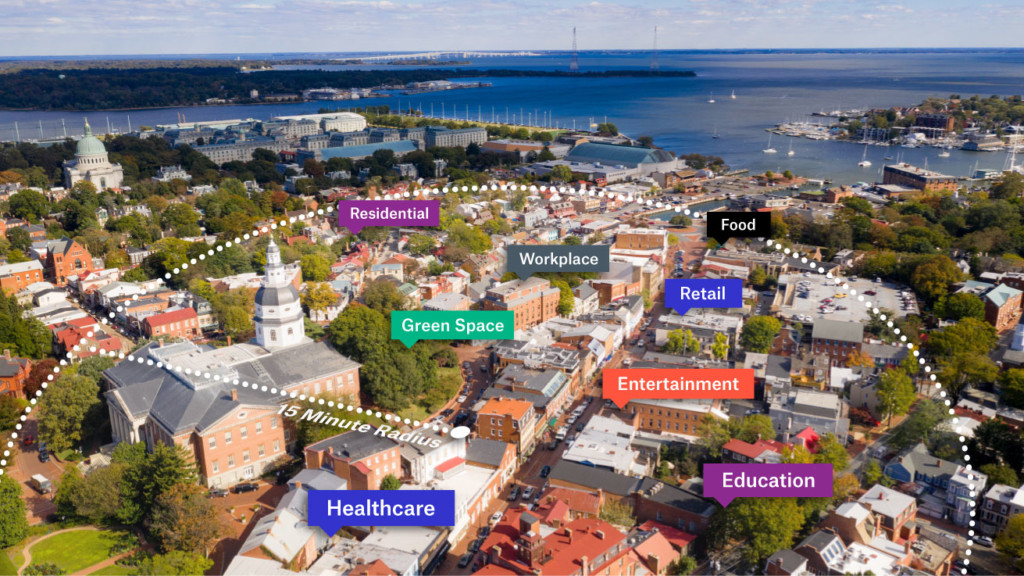
Matt: Where do you think technology comes into all of this?
Andy: In parallel to the needs of the community and how we address those needs is the incorporation of technology. When we talk about connected vehicles and automated vehicles, or even electric vehicles, that is something that heavily lives within the automotive manufacturer’s world. And it’s not typically something that’s supported initially by the infrastructure.
As we look to the future, I see it being a case of the technology being developed first, then the infrastructure comes in to support it. And both will certainly need to work hand in hand.
Because things are changing at a rapid-fire pace, it’s extremely difficult to be clairvoyant and understand when technology is ready. For example, you and I have been talking about connected vehicles since 1997, so this is not new for us. Electric vehicles have also been a discussion item for a long time. But those disruptive technologies didn’t hit the time lines like they were expected to in terms of market penetration.
Matt: And that’s why I think it’s important when imagining the 15-minute city that we keep a certain amount of flexibility within the infrastructure because you really can’t plan for what you don’t know.
We think certain things are around the corner, so we want to try to accommodate them. And whether we’re talking about transportation infrastructure or the electrical or telecommunications infrastructure, we at least need to have a foundation in place so as those new technologies are developed, they can hopefully be better accommodated for.
You make a great point that we don’t need to lose sight of the timeline to implement infrastructure. Generally, we operate on a fairly lengthy timeline of provisioning infrastructure for transport. And that’s because we have very intentional plans go through a process in order to understand how to best lay out a new facility or to expand what that facility can offer. And then it takes time to go through a process to design and build it before it becomes available for the public to use.
In the context of thinking about the 15-minute city, technology is emerging much faster, so the ability to adapt to some of those changes is something that we’re all going to have to be cognizant of in the traditional model of how we plan, design and construct transportation facilities. And we’re going to need a little bit more agility in that process in order to understand how we can incorporate and take advantage of some of these new ways of making our transportation facilities smarter.
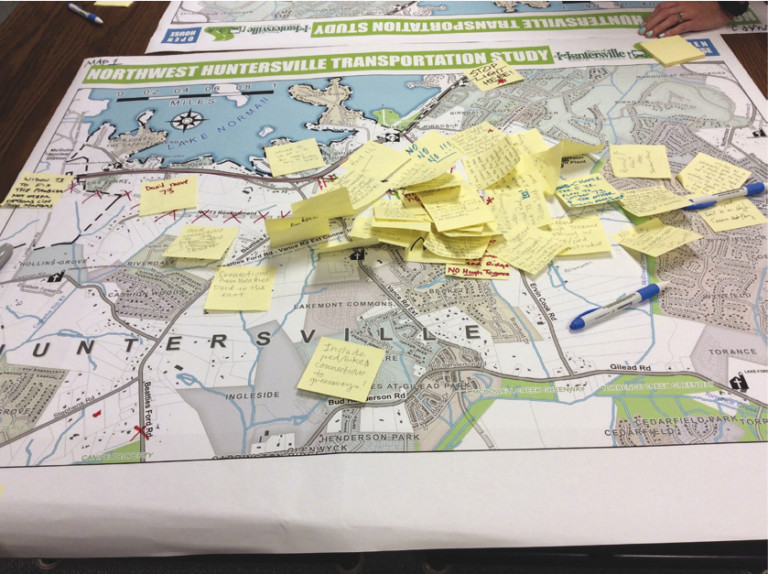
Andy: Given that this is significantly different from how we operate today, what interim steps might be taken to migrate toward a 15-minute city concept?
Matt: From a transportation perspective, I think part of it starts with looking at critical services, as some of those may not be accessible within 15 minutes. So, if you’re trying to encourage the adoption of living and working in a place that is planned with this outcome, how do you still connect those residents and workers to those basic services that are not yet available?
I think it goes without saying that you just can’t go to zero cars in a place like the United States in short order. Subsequently, part of the transition plan may involve looking at this as a phased approach where there are accommodations for private vehicles. It might be out of necessity because you can’t reach the basic services you need within the community you live in. Or it might be because we’re in a country that very much likes our mobility, freedom and accessibility. Either way, I think it’s important to recognize that people are going to want options.
Perhaps on the periphery of some of these 15-minute cities, we may need to have provisions for parking garages for personal vehicles. Maybe within the city, car transport is less emphasized. But give people the option. If they want to use a personal vehicle or have access to a shared vehicle, they could go to some type of facility to access that transport option and extend their connectivity.
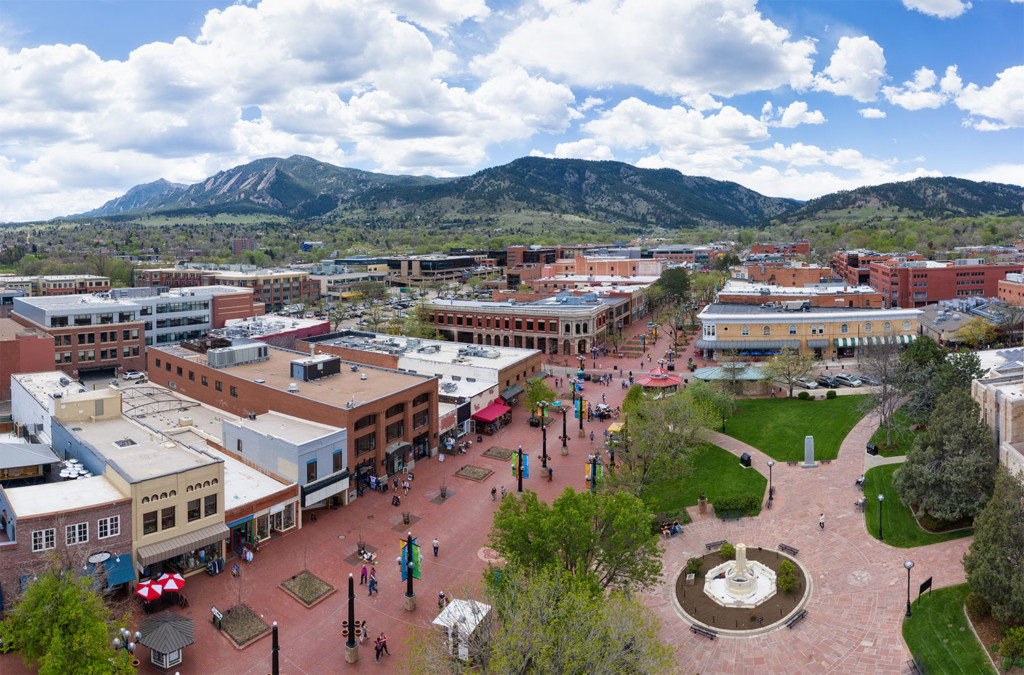
Andy: So again, it’s really about accommodating resident’s needs.
Matt: Yes. We should think of this in the context of what we can accommodate in the 15-minute radius and then complement that with the transport needs that will meet the other basic driving requirements people will have. In the interim, that is going to require a lot more use of personal vehicles because we don’t have access to other options at this point in time. So, I believe a phased approach would be very important to someone considering the 15-minute city.
Matt: When thinking about what the 15-minute city concept might actually look like, we were both drawn to the thought of a large university campus.
Andy: Yes. And to some extent, large universities are already functioning as a 15-minute city—they’re pedestrian-centric, parking garages are located on the periphery, and most services are provided on-site. When we talk about transitioning a community over to a model that looks like this, it’s important to note there’s a big difference between retrofitting existing facilities, which takes an enormous amount of time and planning, versus developing a brand-new community that you can plan with a clean slate.
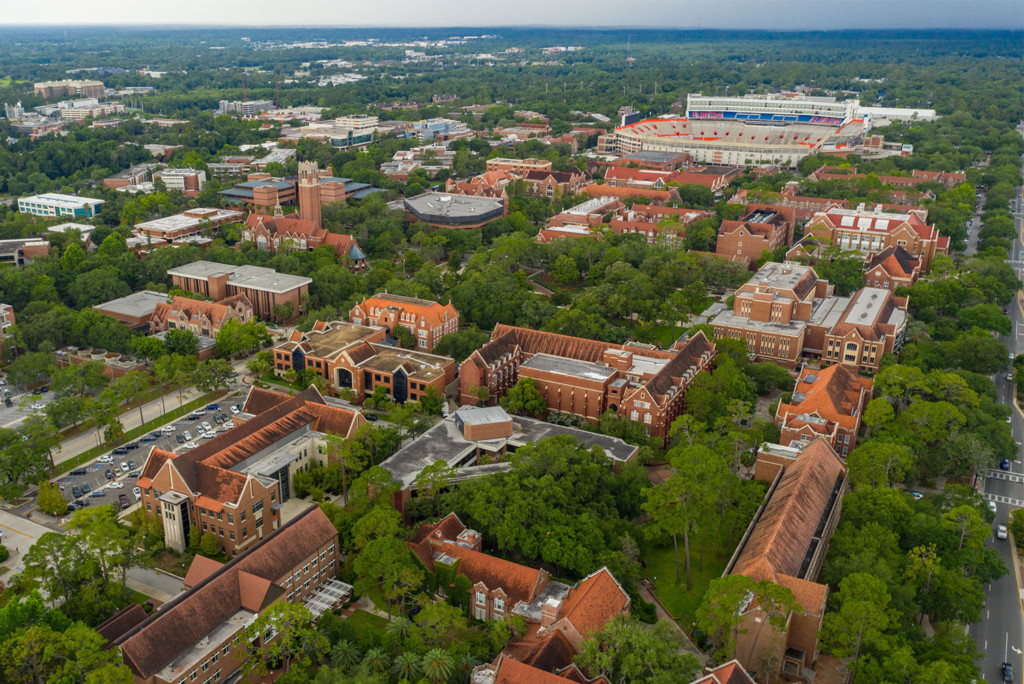
Of course, both of those scenarios provide pros and cons. And it will be vital from a transportation infrastructure perspective to fully understand the implications of working either in a brand-new area and laying out a community as opposed to needing a transition plan. I know from our experience, transportation departments in cities and in many municipalities don’t always have the flexibility to move fast because they’re heavily reliant on a tax base. Also, they don’t have endless money and have multiple needs vying for those dollars.
All these things considered, the ability to rapidly transition a particular portion of your transportation infrastructure can be a bit of a challenge. And that needs to be considered as communities look to the future and the concept of the 15-minute city and decide if that is the way they’d ultimately like to arrange themselves.
